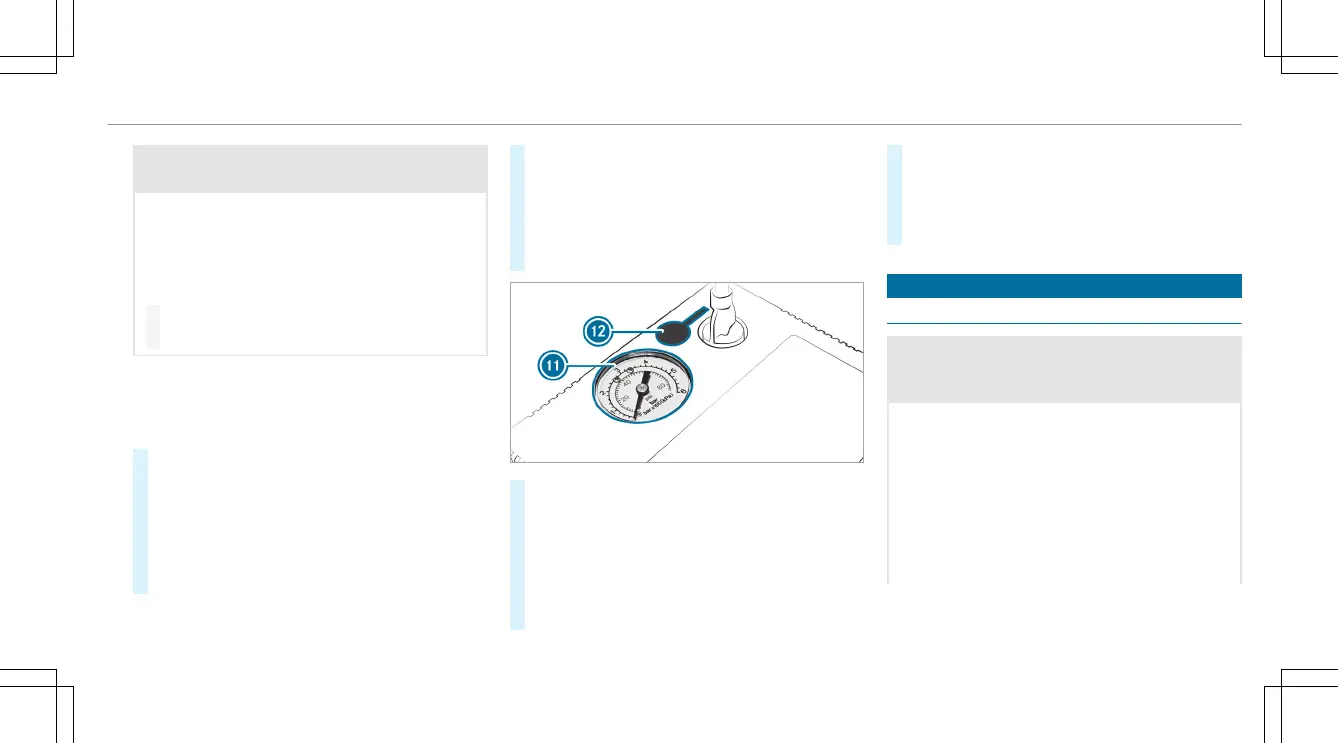&
WARNING Risk of accident due to the
specified tire pressure not being attained
If the specified tire pressure is not reached,
the tire is too badly damaged. The tire seal‐
ant cannot repair the tire in this instance.
The braking and driving characteristics may
be greatly impaired.
#
Do not continue driving.
#
Consult a qualified specialist workshop.
In cases such as the one mentioned above, con‐
tact an authorized Mercedes-Benz Center. Or
call 1-800-FOR-MERCedes (in the USA) or
1-800-387-0100 (in Canada).
#
Correct the tire pressure if it is still at least
130 kPa (1.3 bar/19 psi). See the Tire and
Loading Information placard on the B‑pillar
on the driver's side or the tire pressure table
in the fuel filler flap for values.
#
To increase the tire pressure: switch on
the tire inflation compressor.
#
To reduce the tire pressure: remove the
tire sealant bottle from the tire inflation com‐
pressor.
#
Insert the filler hose in the socket of the tire
inflation compressor and turn it a quarter
turn clockwise.
#
Press pressure release button C next to
manometer B.
#
When the tire pressure is correct, unscrew
the filling hose from the valve of the sealed
tire.
#
Screw the valve cap onto the valve of the
sealed tire.
#
Store the tire sealant bottle and the tire infla‐
tion compressor.
#
Drive to the nearest qualified specialist work‐
shop and have the tire, tire sealant bottle
and filling hose replaced there.
Battery (vehicle)
Notes on the 12 V battery
&
WARNING Risk of an accident due to
work carried out incorrectly on the bat‐
tery
Work carried out incorrectly on the battery
can, for example, lead to a short circuit. This
can restrict functions relevant for safety sys‐
tems and impair the operating safety of your
vehicle.
You could lose control of the vehicle in the
following situations in particular:
R
When braking
Breakdown assistance
251

